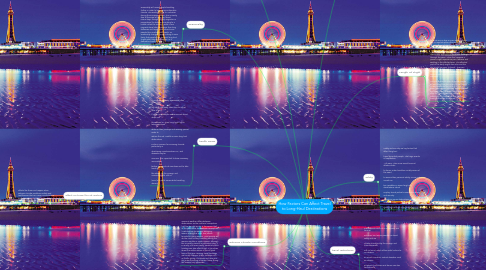How Factors Can Affect Travel to Long-Haul Destinations
par Jamie McCarthy


1. Seasonality
1.1. seasonality will mean people travelling further in order to be in a more desirable climate. Like wanting to go to Australian during the European winter. This is mainly due to the ease of long-haul travel now-a-days- though. Usually migration is proportional to distance according to a model called the Gravity Model: More migrants travel short distances than long distances and larger cities attract more people than smaller settlements. So seasonality changes this by making it more likely that people have to travel long haul to get what they're looking for i.e. a desirable climate.
2. Extreme Climate Conditions
2.1. Seasonal weather differs between destinations, as the northern hemisphere (UK) has its cold winter in the second half of the year, while the southern hemisphere (Australia) has its warmer ‘summery’ season during this time. This affects tourists for many reasons. Most people will do the most holiday travelling during the warmer months or ‘peak’ season, although this is usually more of an attractive idea, it is usually a lot more costly. Seasonal public holidays can also effect travel, in countries where the winter season is the off peak time of the year meaning travel bookings are usually cheaper, public holidays such as thanks giving, Christmas and new year can make travelling at certain times during this season very expensive.
3. entry requirements
3.1. Some long-haul destinations place restrictions on incoming visitors, who may need to apply for a visa well in advance of their visit. Vaccination certifi cates may also be a requirement in certain destination countries. Sources such as the World Travel Guide give country- by-country requirements for visitors before they travel.
4. health issues
4.1. Moving across many time zones often leads to jet lag, when the body takes time to adjust after a long fl ight. Many people are concerned about deep vein thrombosis (DVT) on long-haul fl ights, taking exercises while on their journeys and wearing special socks to reduce the risk. Health in some long-haul destinations is also a concern for incoming tourists, particularly in developing countries where HIV and diseases may be common. It is important to have necessary vaccinations before visiting at-risk countries and to take heed of the advice for the Foreign and Commonwealth Offi ce (FCO) on health issues while travelling abroad.
5. social situations
5.1. When you are considering where to go on holiday you may not want to travel to an area that has been stricken by poverty and filled with slums. It would be hard to enjoy your relaxing vacation if you know that miles away there are people barely surviving. This is very prominent in Brazil as many slums surround high value hotels this affects travel to these places because many people are put off by the sight of people in slums when on holiday. Tourism can also benefit from the poverty struck areas because of charity workers and aid workers coming to this country to give help to people living in slums improving tourist numbers.
6. effect on travel for uk visitors
6.1. effects like these can happen when extreme climate conditons, safety and healthissues that can cause canncelations and at some points there can be travel restriction bandsd to the area.
7. Time Zones
7.1. Jet Lag
7.1.1. Jet lag refers to a range of symptoms experienced while adapting to a different light-dark schedule following a flight to a new time zone. It can affect people of all ages and is the result of your internal body clock not being able to adjust immediately to a new time zone. Jet lag can disturb your sleep at night and make you feel drowsy and lethargic (lacking in energy) during the day. It can also sometimes cause digestion problems. Crossing seven to 12 time zones usually results in more severe jet lag than crossing three to six time zones. Crossing one or two time zones doesn't usually cause any problems.

